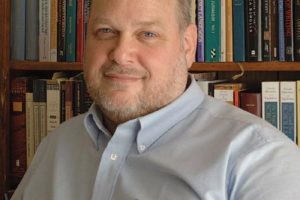
Online Education and Strategic Planning
We can boil successful strategic planning around distance education down to three things. First, know how to create lots of ways to use the digital environment for effective teaching and learning. Second, know your potential students. Third, bring the two together: develop a set of scenarios in which to leverage certain forms of online teaching and learning to engage those potential students.
Let’s break it down.
The core skill to designing good modules week after week for an online or hybrid course is to find the sweet spot between learning outcomes, learning activities, and supporting technology. It would seem like that is three different skills, but it is actually one integrated set of decisions. You start by producing a clear set of learning outcomes (not goals, and not objectives, which always tend to be descriptions of course content). Then, you try to figure out a set of activities (assignments, if you will) that if the students do them will help them master the outcomes. These often progress from individual work to interactive dialogue in community. Then, you go looking for the technology that will support the learning activities that will help achieve the learning outcomes. It is circular. The magic happens when you find the right CMS functionality, tool, or plugin that not only helps the students do what they need to do to learn, but also supports you, the faculty member—especially in time management ways—keep up with the grading, assessing, and giving feedback that is all a necessary part of facilitating good learning. Together, these integrated pieces usher the students through a set of individual, small group, and corporate activities that help them achieve each module’s learning outcomes.
A vibrant community of online teachers share best practices and begin to develop an array of these module scenarios (complete with outcomes, activities, and technology) that can be tweaked and modified for different content and different outcomes. This is the heart of an effective community of online teachers.
The other piece of strategic planning is to know your students. This includes the usual information: where your students live, what denominations they serve, and all the other sorts of demographics we gather. But none of that is as important as being able to describe the type of life (or types of lives) that include being a part of your seminary. What are the barriers that may prevent participation in your learning community? Is it the commute? Is it the second or third commute in one week that moves the equation from possible to impossible? Is it the requirement to disrupt family, jobs, and support networks in order to move to your campus? Is it having to fly to your city two or three times a semester?
A series of focus groups with a set of current students and another with prospective students could create a clearer understanding of what those barriers are. Then, a set of brainstorming sessions by your community of effective online teachers might be able to identify a new set of technology-enhanced tools and processes that could help you lower the barriers and engage your students’ lives more effectively in theological education.
Strategic planning gets interesting when we can do just that: bring our newfound capabilities for creating diverse learning scenarios to bear on lowering barriers to participation in the life of your seminary—without lowering the quality of your education. Can we leverage a virtual learning community for deeper learning in the courses we already offer—essentially increasing the quality of our education? Can we penetrate our current region to a greater degree because more types of lives can take on participation in our learning community and succeed? Can we create new scenarios that transcend the boundaries that previously limited the distance or frequency a student would have to surmount in order to come to campus?
The information age has dismantled a lot that is familiar about the way we have approached theological education. But, it could also be an avenue through which we revitalize, deepen, and extend our theological education to more people.
Leave a Reply